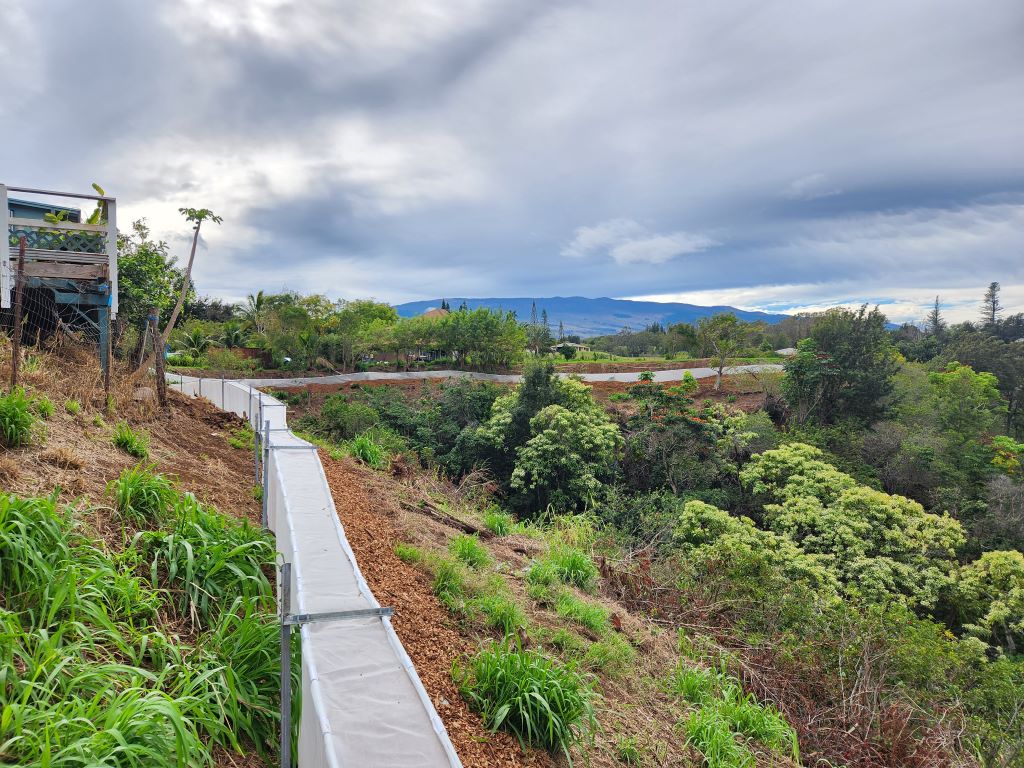

Maui is 735 square miles; coqui are established in various densities across roughly six square miles. Current staffing prioritizes response to coqui to the area in blue. Community groups (green) take on coqui control in their own backyards while MISC responds to coqui reports outside (blue).
What’s happening
The MISC coqui crew is currently significantly short-staffed.Our capacity to respond to coqui reports and community groups will be reduced at least through October.
Staff: We are looking for a new coqui coordinator. This is the full-time management position that oversees all of the Coqui work MISC performs on the island. Our current coordinator, Megan Archibald is moving to the continent at the end of October. We are super grateful for her leadership and contributions to protecting Maui over the past four years.
Field staff: We are also looking to hire four full-time field crew. Please send possible hires our way! If you or someone you know might be interested, please reach out to Megan Archibald at meganpa@hawaii.edu, 808-633-1203.
Current Priorities
For the short term, we have to limit the scale of what we can work on.
- Satellite populations are our top priority: These are smaller populations outside the main Māliko area, where we are actively working toward eradication to avoid new, long-term infestations like we have at Māliko.
- Community groups: We will continue to support community control efforts with sprayer loans, citric supplies and guidance. You will need to have your own truck.
- Questions about community programs? Contact Matt Cook: 808-318-1705, text message works best.
- Have a truck and want to borrow a spray tank? Contact Tyler Gagnon: 808-264-0404, text message works best.
How You Can Help
- Outliers: These are sites with one or two calling frogs. We need your help.
- If you hear just one or two frogs, you can easily remove them by hand-capturing or spraying them with citric acid. We’ll provide supplies and instructions. Contact us for citric acid and tips on how to capture and control these frogs (you can pick up a 1lb bag of citric acid from Tyler Gagnon: 808-264-0404, text message works best.). Please continue to let us know about these. We will assist if we can, and we want to track new locations.
- Reduce coqui habitat by trimming overgrown plants, chipping or removing greenwaste, and eliminating habitat. Reduce coqui habitat
- Spray coqui every six weeks to disrupt the breeding cycle. We’ll provide supplies, equipment, and guidance. Spray coqui in your own yard
- Form a community group: Partner with your neighbors to form a community group to tackle the issue together. Consistent efforts across the neighborhood and throughout the year can help return your neighborhood to a quieter, pre-coqui state. Partner with your neighbors
Contact us for more information:
● Questions about community programs? Contact Matt Cook: 808-318-1705, text message works best.
● Have a truck and need to borrow a spray tank? Contact Tyler Gagnon: 808-264-0404, text message works best.
● Single frog control? Pick up a 1lb bag of citric acid from Tyler Gagnon: 808-264-0404, text message works best.




